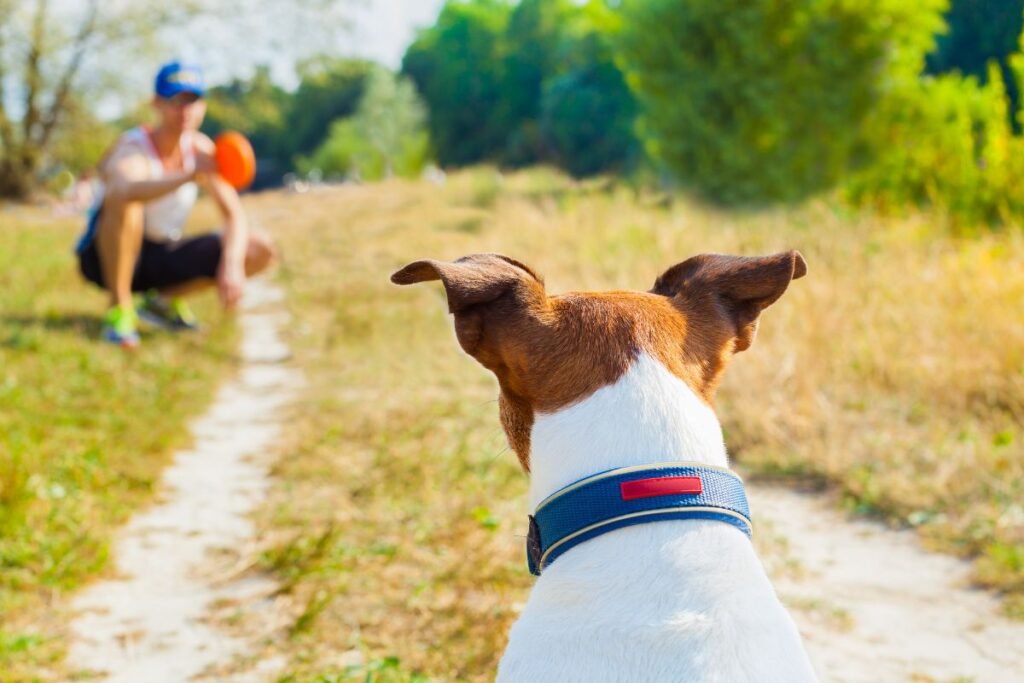How much exercise does a dog need daily – Discover the exercise needs of your pup, from small to large breeds, and the benefits of daily activity.
The Importance of Exercise for Dogs
Just like you, your dog needs regular exercise to stay healthy, happy, and out of trouble. Exercise isn’t just about burning off energy, although that’s a big plus. It’s about keeping your dog physically fit, mentally stimulated, and emotionally balanced. Let’s dig into why exercise is the secret sauce to your pooch’s well-being!
Puppy Love and Exercise
Puppies are bundles of energy, and they need exercise to help them grow into strong, well-behaved adults. But remember, their exercise needs are different from adult dogs. Up to three months, they should have short, frequent play sessions to socialize and help with physical development. Avoid anything too strenuous to protect their growing bones and joints.
As they hit the three to six-month mark, you can bump up their activity to around 15-20 minutes of play or walks twice daily. This helps them learn leash manners and burn off some of that puppy energy.
Adult Dogs: The Exercise Spectrum
Once your dog reaches adulthood, their exercise needs can vary widely based on their breed, size, and energy level.
Your tiny companions like Yorkshire Terriers or Chihuahuas might seem like they’re always on the go, but they generally need about 30 minutes to an hour of physical activity each day. This could be a walk, some fetch, or even a fun game of hide and seek!
Dogs like Beagles, Bulldogs, or German Shepherds require more space to run and play. Think 45 minutes to 2 hours of exercise daily. They love to explore, so a good hike or a long walk in the park can be ideal.
Border Collies, Australian Shepherds, and other herding dogs? They’re the marathon runners of the dog world. These pups could need two or more hours of physical and mental stimulation. They thrive on challenges, so agility training or complex tricks can be their jam.
Seniors Get in on the Fun Too
Your older dog might have slowed down, but they still need exercise. Gentle activity for 20-30 minutes can help keep their joints mobile and their spirits high. Adjust the intensity based on their health, and remember, even a short walk or a slow game of fetch can make a world of difference.
Signs Your Dog is Under-Exercised
We all know the signs, right? The incessant barking, the chewed-up shoes, the digging in your garden. These are classic signs your dog might be under-exercised. Hyperactivity, restlessness, and even weight gain are other red flags.
Mix it Up: Variety is the Spice of Life
To keep things interesting and work different muscle groups, mix up your dog’s exercise routine. Walks are a classic, but vary the routes to keep them exciting. Fetch is a timeless game and a winner for burning off energy. Swimming is excellent for dogs with joint issues or those who overheat easily. And for the brainiacs or athletic dogs among us, agility training provides fantastic mental and physical stimulation.
Mental Stimulation: The Other Half of the Equation
Physical exercise is vital, but don’t forget the mind. Dogs need to be mentally stimulated too. Puzzle toys, training sessions, or even ‘find it’ games where they search for hidden treats can tire them out just as much as a run in the park.
Considering Health and Weather
Always keep an eye on your dog’s health. Dogs with certain conditions might need tailored exercise routines. And let’s not forget the weather. In extreme heat or cold, adjust your exercise plans to keep your pooch safe.
A Happy, Healthy, Well-Exercised Dog
Exercise isn’t just about keeping your dog physically fit; it’s about fostering a deep bond between you and your furry friend. It’s about keeping them mentally engaged, emotionally balanced, and out of mischief. So, grab that leash, put on your walking shoes, and give your dog the gift of health and happiness through exercise. Remember, a tired dog is a good dog, and a well-exercised dog is a joyful, healthy one. Let’s make every day an adventure for our four-legged family members!

Summary
How much exercise does a dog need daily?
The amount of exercise a dog needs daily can vary significantly based on several factors including the breed, age, health status, and individual temperament of the dog. Here’s a general guideline:
Puppies
- Up to 3 months: Short, frequent play sessions for socialization and physical development. Avoid overexertion.
- 3 to 6 months: About 15-20 minutes of play or walks twice daily.
Adult Dogs
- Small Breeds: Typically require 30 minutes to 1 hour of physical activity daily. Examples include Yorkshire Terriers, Chihuahuas, etc.
- Medium Breeds: Need 45 minutes to 1.5 hours of exercise. Breeds like Bulldogs, Beagles, or Cocker Spaniels fall into this category.
- Large Breeds: Should get 1 to 2 hours of exercise. This includes German Shepherds, Labradors, and Boxers.
- Working Breeds (e.g., Border Collies, Australian Shepherds): These dogs might need 2 or more hours of physical and mental stimulation.
Senior Dogs
- Older Dogs (7 years and above): Their exercise needs decrease but should still receive 20-30 minutes of gentle activity, adjusted for their health conditions.
General Guidelines
- Mental Stimulation: Alongside physical exercise, dogs also benefit from mental stimulation through training, puzzle toys, or interactive play.
- Variety: Vary the types of exercise; walks, fetch, swimming, or agility training keep things interesting and work different muscles.
- Health: Always consider the dog’s health. Dogs with certain conditions might need less strenuous activity or specific types of exercise.
Signs Your Dog Might Need More Exercise
- Excessive barking
- Destructive behavior like chewing furniture or digging
- Hyperactivity or restlessness
- Weight gain
Additional Notes
- Weather and environment play a role. In extreme temperatures, adjust exercise routines accordingly to avoid overheating or hypothermia.
- Social interaction with other dogs or humans can also be a form of exercise.
Remember, these are general guidelines, and individual dogs might require more or less exercise based on their unique needs. Always observe your dog’s behavior and energy levels, and consult with a vet if you’re unsure about how much exercise is appropriate for your pet. Regular exercise not only keeps your dog physically fit but also mentally stimulated and can help prevent obesity, behavioral issues, and certain health problems.
Explore related topics
Check out our other posts for tips, tricks, and fun pet facts on our blog, and join our pet-loving community on Pinterest, Facebook, and Instagram. Let’s make every day an adventure for our furry friends!

